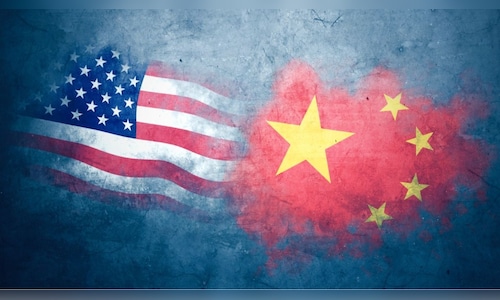[ad_1]
The potential US-China ‘cold accord’ would achieve at least two things instantly: corner Russian President Vladimir Putin into a deal to end the Ukraine war, and turn the world into a bipolar one, which would be much easier to deal with than a multipolar world with many power centres.

The conspicuous absence of tariffs on Chinese imports to the US in Trump’s executive decisions on day one as the 47th President has left room for the unexpected. As a popular Tamil proverb goes, “Saatchikaaran kalil vizhuvathai vida sandaikkaran kaalil vizhalam“, (It’s better to plead with the enemy than the witness).
A US-China alliance may be in line with how archrivals Britain and France teamed up against Germany ahead of World War II.
For China, it would end the uncertainty of tariffs, at a time when the world’s second-largest economy is in the doldrums. China can strike a deal that allows it to continue to trade with the US, and have a sphere of unchecked influence, one that doesn’t overlap with that of Trump’s America.
Trump’s tariffs on Mexico and Canada can be seen as a no-entry zone for China, which has been using the route to beat US tariffs. A transactional Trump may not lecture China for mistreating Muslims in Xinjiang or exploiting mines in Africa, and the debt traps it lays out for other countries, as long as American businesses like Tesla and Apple get a good deal in China.
In his inauguration speech, Trump said that he would end wars, not enter new ones, and that he intends to expand territory. He may be referring to his stated wish to take over Canada and/or Greenland but there may be more to it because colonising in the 21st century may look very different than it did 200 years ago.
Trump may have learnt that Putin can’t be admonished, cajoled or intimidated out of Ukraine. Conceding to Russia’s current demands to end the Ukraine war won’t be defensible in the US. However, a US-China ‘cold accord’ can force the 72-year-old Putin down from his high horse and force a deal that Trump can tom-tom at home.
If China and the US are going to be friends, Russia will spread its forces thinly across its 4,300 kilometre-long border with China, which has been contested in the past, keeping Moscow’s territorial ambitions in check for a much longer period. Putin may settle if the US gives up on its wish to include Ukraine in the North Atlantic Treaty Organisation (NATO), which Trump doesn’t like anyway.
A deal with US would formally establish China, led by the 71-year-old Xi, as one of the two great powers in the world, ahead of Putin.
It could result in a massive ego boost for Xi, give him enough time and resources to repair the Chinese economy, and make him one of the two major colonisers of the 21st century.
The US has been wanting to counterbalance the rise of China since the time of President Richard Nixon and his national security advisor Henry Kissinger. When China’s rise could only be slowed down from time to time, and never stopped, the US tried coaxing it into adopting democracy and free market values through positive reinforcements like inclusion into the global multilateral forums. China had the cake and ate it too. It became better at manufacturing and worse as an authoritarian regime.
Trump won’t care if Chinese people live in a democracy or dictatorship, as long as he can get China to buy oil from the US, and not Russia or Iran, at a good price. It may help partly bridge the trade deficit too. Even a temporary peace that lasts a few years will be a win-win for both the US and China, with far-reaching social, economic and political implications for the world at large.
While global markets may cheer the end of a big uncertainty and trade war between US and China, the long-term impact of a potential ‘cold accord’ may not be obvious or measurable in the near term.
For instance, India may have to review its negotiating cards to fend off the Chinese threat at its borders. A US guarantee on behalf of China may come at the cost of free entry for Elon Musk’s Tesla and SpaceX in India.
Rules will be rewritten, borders may be reviewed (if not redrawn altogether), and treaties will be tested.
These are some of the possible fallouts if there’s cold accord between the US and China: Dedollarisation may slow down, other oil exporters may lose more pricing power, Taiwan’s pro-democracy parties will be left in the lurch, Iran may get pushed closer to a regime change, Pakistan may remain at China’s mercy, and India will have to weigh the intensity of its friendship with Russia, which is going to be at crossroads with China and the US.
However, history has a clear lesson: no attempt to colonise the world between two great powers ended well for the colonised.
[ad_2]
Source link










